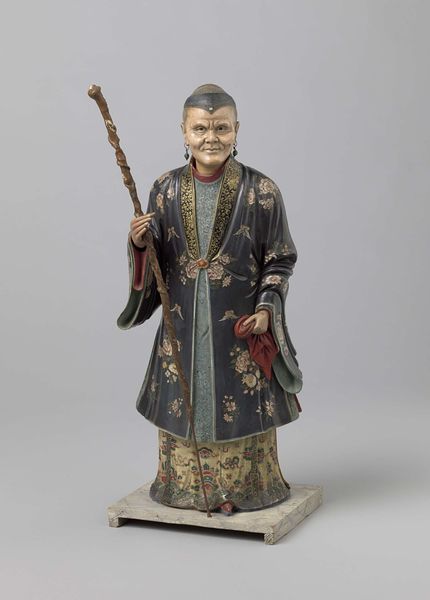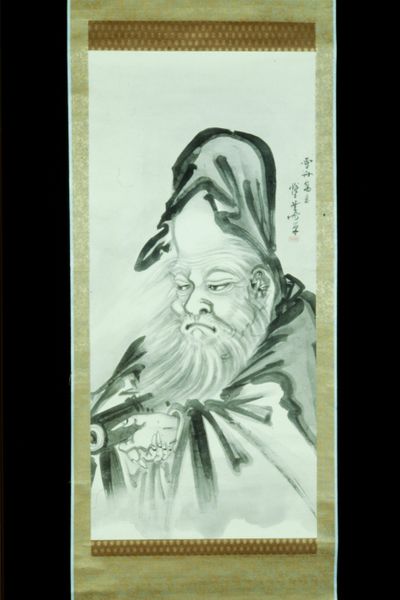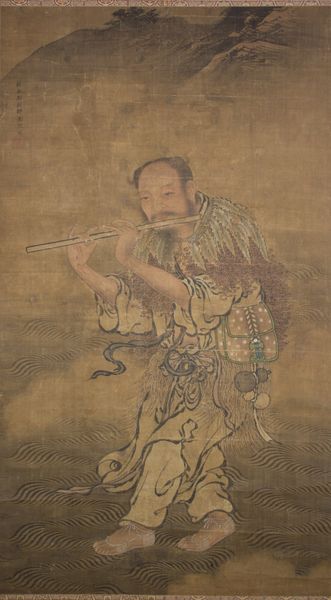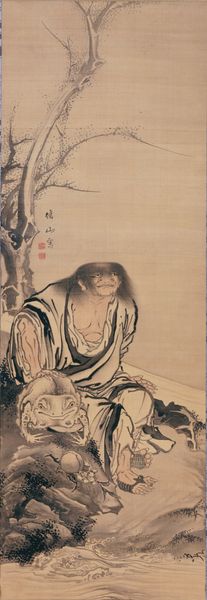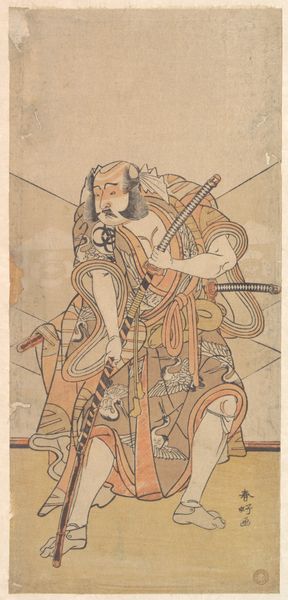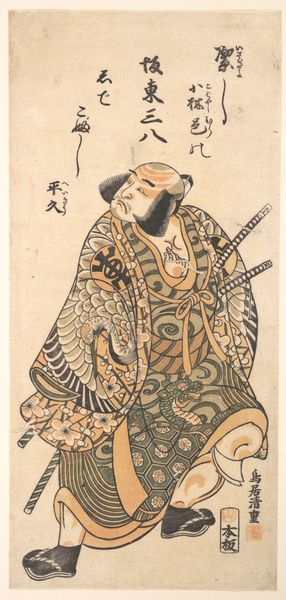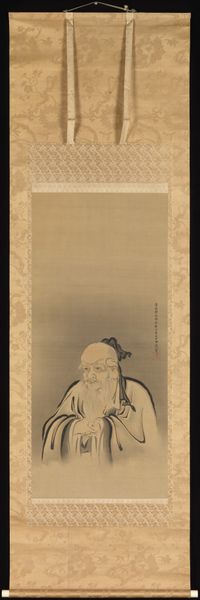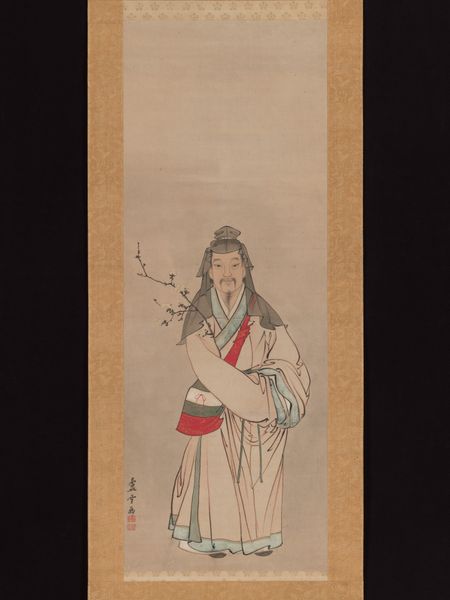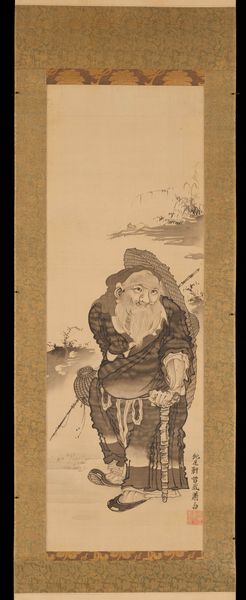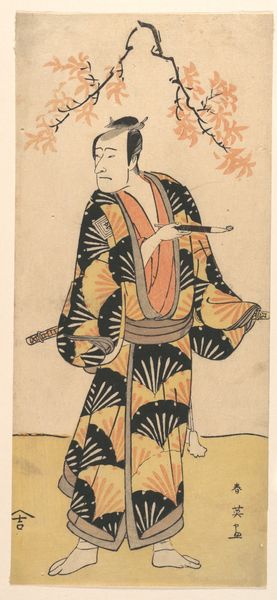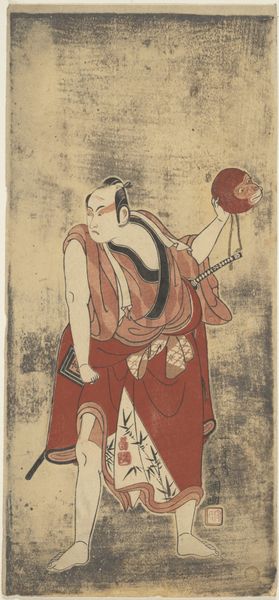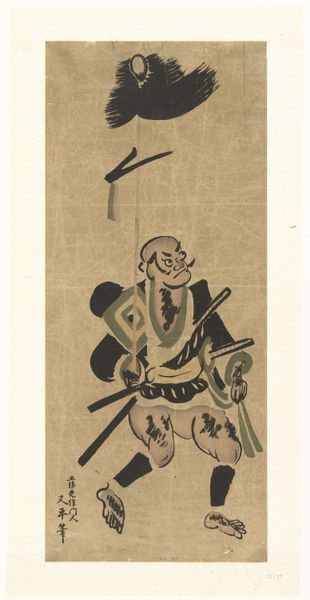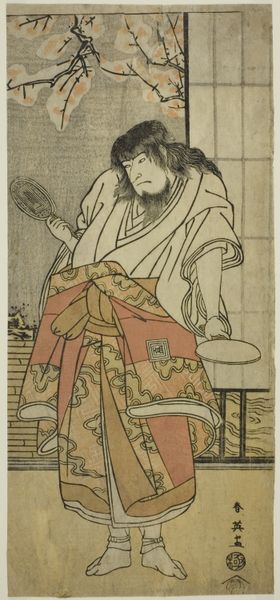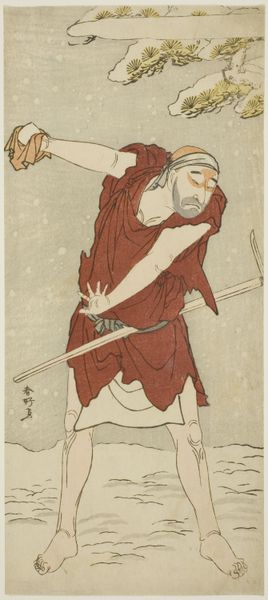
(A farmer discovering Momotaro in a peach) c. late 19th century
0:00
0:00
sculpture, ivory
#
asian-art
#
japan
#
figuration
#
folk-art
#
sculpture
#
japanese
#
ivory
#
miniature
Dimensions: 2 1/2 × 1 3/4 × 1 in. (6.35 × 4.45 × 2.54 cm)
Copyright: Public Domain
Curator: This intricate ivory carving from late 19th century Japan, currently residing here at the Minneapolis Institute of Art, depicts a farmer discovering Momotaro within a giant peach. Editor: My first impression is the intimacy, it’s very tactile—the figure of the farmer radiates surprise and something akin to delighted exhaustion. The warmth of the ivory and the miniature scale enhance this feeling. Curator: Absolutely, the materiality is significant. Ivory netsuke were popularized during the Edo period, often serving as toggles for securing pouches and containers on kimonos. But they also reflected social standing, and ivory denoted prosperity. As social structures shifted in the late 19th century, they continued as markers of taste, accessible to a growing merchant class. Editor: Seeing Momotaro emerging from the peach—the peach is powerful imagery! Peaches have long been associated with immortality and protection from evil spirits, right? Momotaro himself is a symbol of courage and filial duty in Japanese folklore. It seems the artist aimed to imbue him with those qualities even at this nascent stage. Curator: Indeed, the story of Momotaro, or "Peach Boy," served a didactic purpose, reinforcing samurai values even among the merchant classes. But what's interesting to me is that the myth of Momotaro became increasingly important with rising militarism and expansionism as Japan sought to find its place in a new global order at the time this netsuke was produced. The story promoted national identity at a time of extreme flux. Editor: It’s amazing how something so small can tell such a big story. The symbols contained are more profound than I initially recognized, providing more than just the joy of recognizing this old legend. The combination of domesticity and destiny, represented by the farmer and the heroic infant is what stays with me. Curator: A tiny carving, yet a reflection of immense cultural forces shaping Japan at the turn of the century.
Comments
No comments
Be the first to comment and join the conversation on the ultimate creative platform.
